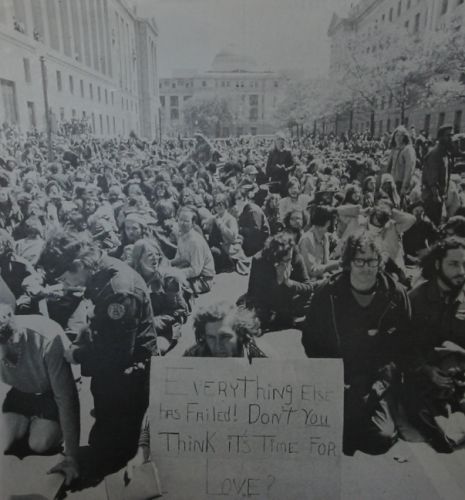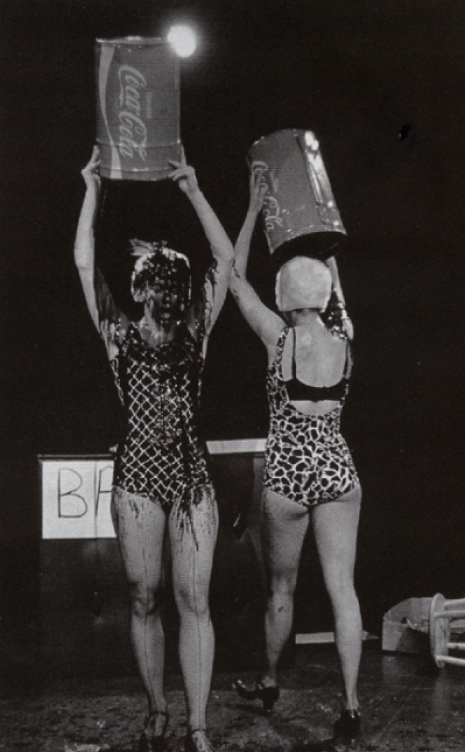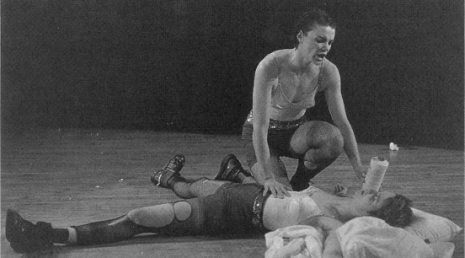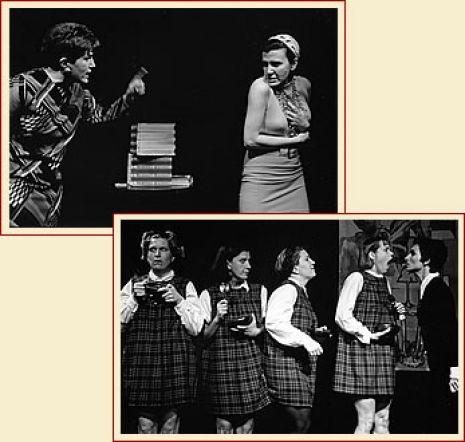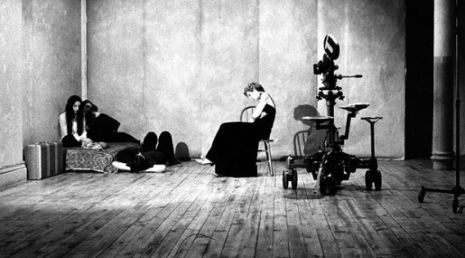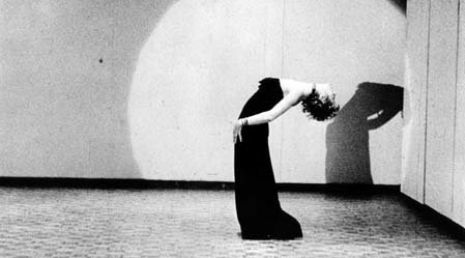Influences
Maybe this has something to do with my early relationship to theatrically based performance and dance but I think all my work is collaborative in some form or another. I don’t really think any artist makes work alone. In my case, it’s true that sometimes those collaborative relationships are formalized and named but in all the other cases where the work ‘authored’ by me alone, it was undoubtedly made in deep conversation with a whole bunch of people: my partner, my colleagues and friends, strangers whose works I see or read, etc.
I love group shows because inside a group show the work is undeniably in conversation with other artists and artwork. The biggest challenge I faced in approaching the Whitney show in 2012 was to create a show that wouldn’t erase the many collaborative relationships that support my work.
In fact, I struggled with this for months and, in the early stages of planning, I met with my friend and colleague Andrea Geyer to talk this through. We threw around ideas about the space and about creating a platform on which the works could be in relation to each other rather than separated. This kind of dialogue, support, developing ideas in active conversation with friends, colleagues, and my partner, is a huge part of my practice. Andrea and I decided to continue that work and to formalize a collaborative piece for the Whitney exhibition. The work is called Stage-Set, and is a collection of floors, walls and stair units, made out of plywood, that held the other works.
Most recently, I’ve been collaborating with my partner, Brooke O’Harra, who is an experimental theater director. The work is deeply rewarding and also challenging. We’ve necessarily had to navigate that disciplinary gap that you mentioned between theater and performance but in doing so we’re reaching forms that push back upon both fields and, for me, this is incredibly exciting.
One of the things I was most compelled by when I started collecting spoken word records was the power of a voice to transport emotional affect and the centrality of this affect to operations of historical memory. So much of historic speech is redelivered as a sound bite that it can be hard to notice. Spending so many 20 minute stretches (the length of speech that can be recorded onto a 12” LP at 33rpm) listening to a single voice, I found myself constantly thinking about politics, and personality, and identification, and desire, and drama, and intimacy, and affection, and faith. When I was listening, I was acutely aware that I was materially in the presence of the voice. Almost everything else was absent – image, body, place or space. Presence is such a potent ghost and such a disquieting anachronism. Hardly any other documentary medium so successfully repeats its original enunciation, even video or digital video, because the image as it ages, marks the record as being other than this moment. Because a recorded voice of George Clinton in an interview, or Robert Kennedy giving a speech, or Lady Bird Johnson describing Washington D.C., or Bud Berman opposing the War in Vietnam can slip into our moment so creditably, I think it activates an extremely productive temporal misplacement.
Interestingly, it didn't come up for me in the Whitney show, I think, because my work deals so concretely with what I call the ‘not-event.’ When I left the theatrical context in 1998, I stopped making work that repeated. I shifted from doing to using performance. I began constructing performances as singular actions or events that constructed something else: a video, a series of photographs, etc. These documents, or not-events, are autonomous; they can, and are, shown without the performance. Once performed, the actions or performances are not re-performed. For me, the issues of how to present performance in a museum are not as pointed because the work, as a condition of its existence, has already translated into another form.
I think I arrived at it anecdotally from my interest in performance and documentation, and also from being a a viewer/reader of past political events and projects. Being a witness to an event that you did not experience live or, perhaps weren't even alive to experience is both a straightforward, and intensely complicated position. Later, as I encountered conceptualism, these practices impacted my understanding. I think Smithson's site/non-site is an interesting parallel to event/not-event. For Smithson, the non-site, (a map being one form) represents the site but does not resemble it. I have always felt that the not-event resembles but does not represent the event. If you think of the iconic photo from the Kent State massacre or other singular still pictures of a political event, it looks like the event in some form, is visually ‘of’ the event, but very definitively does not and cannot represent the event. This is also how I distinguish between the aims of documentation and the conditions of the document.
The event and the not-event are two sides of the same piece of paper. They are distinct but also can't be separated.
I am working on a new project that is terrifying me. Does that count as excitement? It’s a work called Ricerche and takes up Pier Paolo Pasolini’s cinema verité film, Comizi d’Amore, to address this current moment of deep transformation in the U.S. regarding the way in which sexuality intercedes in the political sphere. I was recently out in the Midwest doing interviews with various groups of people because it’s one of the things about Pasolini’s film that most intrigues me: he interviews people in groups, not individuals. I know I’m on the right track but I’m not yet sure what the work is or will become.
First, the multiple performance artists, choreographers, theater directors whose work I encountered in the early 90s: Five Lesbian Brothers, Dancenoise, Robbie McCauley, Jeff Weiss’ serial work, Hot Keys. My work doesn’t have any formal relation to the work they did, and my practice is quite distinct from theirs, but these works and the audience/community that they held – week to week sometimes, show to show other times – gave me a foundational experience of performance events that exceeds the work itself, as well as in the way in which an aesthetic experience can produce collective identification(s).
One of my strongest experiences of this was seeing Jeff Weiss’ serial performance Hot Keys. There were, at least what felt like, eight or nine plots going, the primary one about a gay homicidal serial killer and his father, who was also his boyfriend. The evenings would go on for three hours without intermission. The entire audience knew an opening and closing song by heart and would sing along with Jeff, who bounced, ran and rushed around the stage, singing and talking to us in his role of the father. I remember one evening Jeff came out and the music started and suddenly everyone – literally everyone in the theater - started singing that Carpenters song, There’s a Kind of Hush.
Most of the audience came every week, and came because they loved Jeff and loved Hot Keys but also because something was happening in the room that exceeded all of us and also depended on all of us. I think we were suddenly finding ourselves as a part of an event or a group or a world. This has stayed with me for a very, very long time.
Click here to read an interview by Bill Rice of Jeff Weiss.
Many artists have directly informed the form and methodologies of my work. Most formatively is Yvonne Rainer. I think it was 1994 when I sat at a Steenbeck in the New York Public Library watching Rainer’s first film, Lives of Performers. It was a revelation to me, and stunning how deftly the film held multiple layers of performance – rehearsal, performance, documentation, and commentary – inside of any given scene. There is a moment when the dancers are describing a dance that is being shown through a series of photographs. You think you’re listening to a voiceover recording of the dancers and Rainer in a sound studio, until Rainer makes a joke and an audience laughs. The surprising awareness that the dancers aren’t in a recording studio but reading a text in front of an audience reorients your own position as a viewer and explodes the boundaries of what a performance can do. Rainer’s lifelong commitment to placing emotional knowledge side by side with rigorous intellectual analysis has been deeply impactful on my process.
I am influenced a lot by writers, although I’m in desperate need of more time to read. I love the work of Carson McCullers, James Baldwin, Virginia Woolf, Djuna Barnes, Gertrude Stein, all writers whose work articulates constantly blurred boundaries between public and private spheres, writers who make evident the political dimensions of mundane domestic acts, moments, scenes or figures.
I am also deeply interested in the full variety of documentary film. Films like The Murder of Fred Hampton, Jean Rouch and Edgar Morin’s Chronique d’un été, the work of the Black Audio Film Collective. Also the Nippon Eigasha footage of the aftermath of the bombing of Hiroshima and Nagasaki, which was never constructed or edited into form because it was censored by the US military. I’m attracted to the reasons and methods that artists, filmmakers, activists and journalists take a camera and a microphone to a particular place, at a particular time.
This steers me back to the archive. One of the most foundational resources for me, as you’ve already pointed to, are the many things I find in archives that I seek out or stumble over. There are small things that I never take explicitly into a work, like the recording of Robert Kennedy speaking in Indianapolis on April 4, 1968, announcing to a crowd of people who don’t yet know, that Martin Luther King was assassinated. I’m so taken by the gasp that you hear from the crowd, an utterance that reflects the profound trauma of that news. Or the photos of Diana Davies, an activist and photojournalist who prolifically photographed early queer activism in the US, documenting her friends and her becoming political community. Or the collection of banners made by the Artists Suffrage League that are housed in the Women’s Library in London.
And on and on and on…



